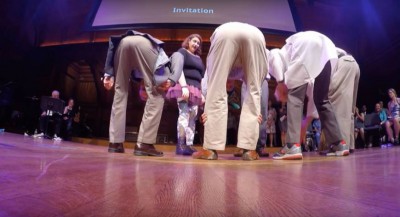It’s been a great pleasure to record a lecture on “Ocular Proprioception and Attention” this week, at the invitation of the organizers of the International Society for Proprioceptive Disorders.
The lecture is available here.
The lecture has three parts. The first part, “Oculoproprioception: Anatomy” presents the anatomy of the oculoproprioceptive system and allows me to offer a first glimpse into new, yet unpublished, results from my lab showing an oculoproprioceptive projection in the brainstem’s oculomotor nuclei in humans likely to play a role in inter-ocular alignment.
The second part, “Oculoproprioception: Methods” details the methods that are available to study this sensory modality in humans.
The final part “Attention” presents the contribution of the oculoproprioceptive signals to the allocation of attention in space and a new hypothesis about disease mechanisms in spatial neglect, which is a disorder of spatial attention in stroke patients.
I just realised that the lecture compresses thirteen years of research into just 90 minutes. I feel very privileged to have worked on a topic I am curious about and to meet great mentors, colleagues and students along the way.

 It is very difficult to manipulate the rotation signals from the eye
It is very difficult to manipulate the rotation signals from the eye